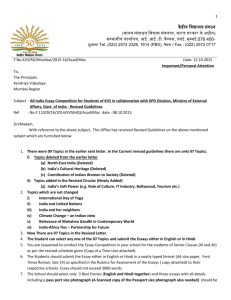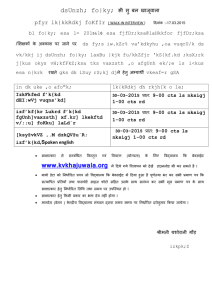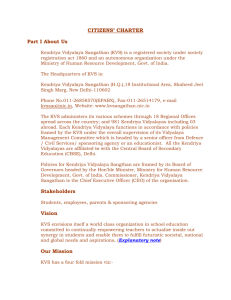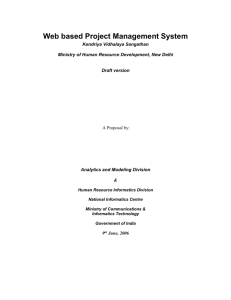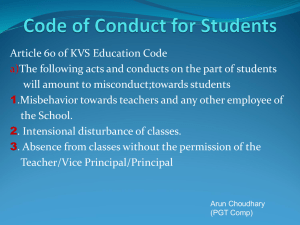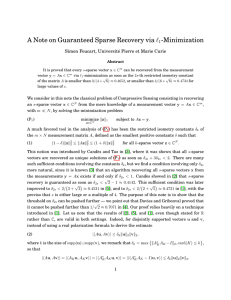The Catalytic Key: the K
advertisement
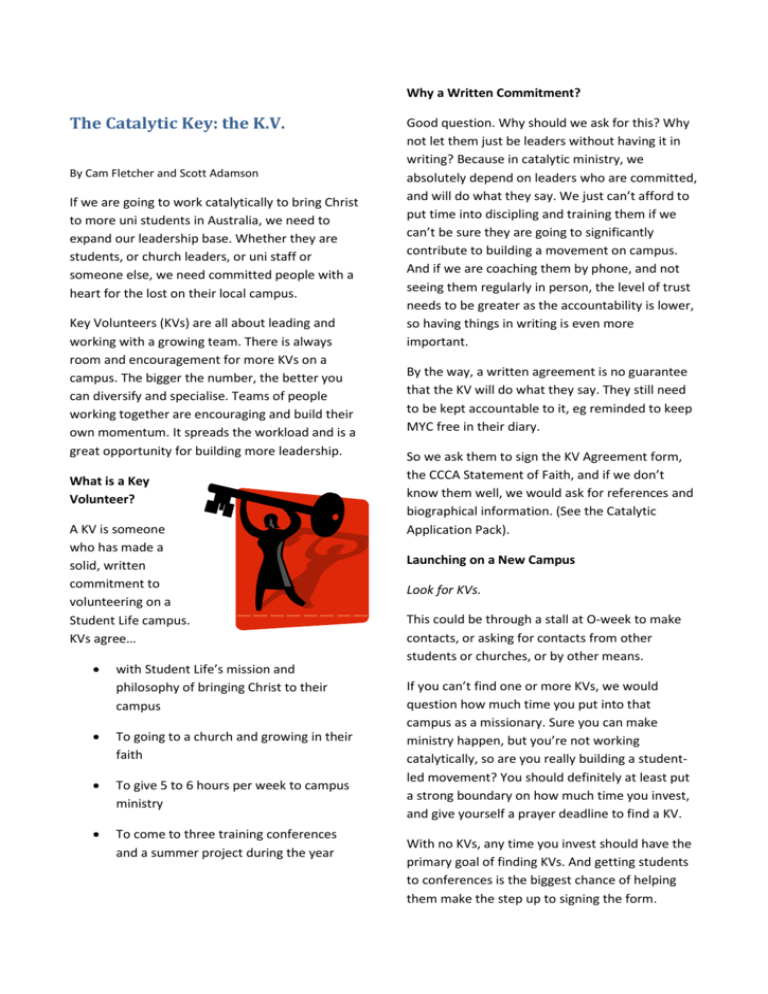
Why a Written Commitment? The Catalytic Key: the K.V. By Cam Fletcher and Scott Adamson If we are going to work catalytically to bring Christ to more uni students in Australia, we need to expand our leadership base. Whether they are students, or church leaders, or uni staff or someone else, we need committed people with a heart for the lost on their local campus. Key Volunteers (KVs) are all about leading and working with a growing team. There is always room and encouragement for more KVs on a campus. The bigger the number, the better you can diversify and specialise. Teams of people working together are encouraging and build their own momentum. It spreads the workload and is a great opportunity for building more leadership. What is a Key Volunteer? A KV is someone who has made a solid, written commitment to volunteering on a Student Life campus. KVs agree… with Student Life’s mission and philosophy of bringing Christ to their campus To going to a church and growing in their faith To give 5 to 6 hours per week to campus ministry To come to three training conferences and a summer project during the year Good question. Why should we ask for this? Why not let them just be leaders without having it in writing? Because in catalytic ministry, we absolutely depend on leaders who are committed, and will do what they say. We just can’t afford to put time into discipling and training them if we can’t be sure they are going to significantly contribute to building a movement on campus. And if we are coaching them by phone, and not seeing them regularly in person, the level of trust needs to be greater as the accountability is lower, so having things in writing is even more important. By the way, a written agreement is no guarantee that the KV will do what they say. They still need to be kept accountable to it, eg reminded to keep MYC free in their diary. So we ask them to sign the KV Agreement form, the CCCA Statement of Faith, and if we don’t know them well, we would ask for references and biographical information. (See the Catalytic Application Pack). Launching on a New Campus Look for KVs. This could be through a stall at O-week to make contacts, or asking for contacts from other students or churches, or by other means. If you can’t find one or more KVs, we would question how much time you put into that campus as a missionary. Sure you can make ministry happen, but you’re not working catalytically, so are you really building a studentled movement? You should definitely at least put a strong boundary on how much time you invest, and give yourself a prayer deadline to find a KV. With no KVs, any time you invest should have the primary goal of finding KVs. And getting students to conferences is the biggest chance of helping them make the step up to signing the form. If You’ve Got KVs? Invest your time predominantly with them. Any activities should be built around the KVs and their availabilities. Nothing happens unless at least some of the KVs can be present. It’s very tempting to go after and spend time with any Christian who you can see has leadership qualities; however, if they have not chosen to select themselves in by becoming a KV, you will be just chasing the wind. Seriously. This recommendation can be a bit flexible depending on how much missionary energy you have. If you have more than one missionary day per week, you could spend time with Potential Key Volunteers. But if you are just one missionary with one day a week to invest on a campus, the way you invest your 6-8 hours is absolutely critical. As Andrew Mellor (Downtown Sydney Team) says, “where will I drop my penny to make the biggest impact?” Aim to Double the Number of KVs Every Year This is the main game, the thing that is nonnegotiable. If you’ve got one KV, seek to have two next year. If you’ve got two, pray for four for next year. If you’ve got ten, aim for twenty. We reckon any doubling is as hard as any other. That is, it’s just as hard to go from 1 to 2 as it is from 2 to 4 or 10 to 20. And if some of them are graduating this year, you know they won’t be part of next year’s figures, so you need to work even harder. And here you apply the “Mini-Me Principle” of never doing anything alone. Any activity is a chance to train someone else, so they can do it in the future. That way, a PKV thinks “it’s not that hard to be a KV, I just have to do what this KV guy is doing.” Form a KV Leaders Team, and Allocate Portfolios Once you have three or four KVs, you really have the makings of a leadership team. This is the time to give them “portfolios”, or areas of action to oversee. This will probably be based on the different KVs’ passions, gifting, and skills. Disciple Only the KVs If you’ve only got very limited time as a missionary, you’ve got to make it count. That means discipling the KV’s, not anyone else. That doesn’t mean you don’t spend time with other students – you’ll probably see them at small groups or prayer meetings or in other settings. KVs are the best people to challenge others to become KVs When Cam started USQ as a catalytic campus, he challenged 14 students to become KVs. The result? Only four said yes. FOUR! That’s not too crash hot, that’s not even a pass mark! Since then, he quickly learned that KVs have a much better success rate at challenging new students to become KVs. In fact, at USQ, it’s been close to 100%. Why is that? Because if a KV looks at a missionary who is challenging him to do something, the KV thinks “oh, it’s the missionary’s job to do this, he’s a pro, I could never do it as well as him, count me out”. But if a KV challenges him? “Oh, he’s an ordinary student like me, it’s not that hard, I can do that!” Conclusion Your movement lives and dies on your leadership base, ie your KV’s. Increase the number of KV’s and everything else grows exponentially – evangelism, discipling, people going to conferences and summer projects, and recruitment to become full-time missionaries. It’s that simple. That’s why the Key Volunteer is really the “catalytic key”.

